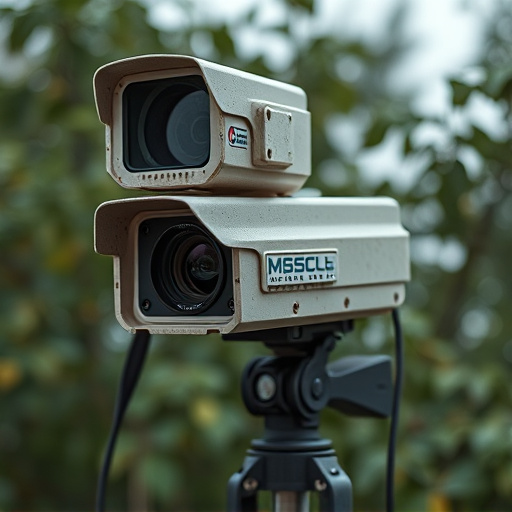A study tested the effectiveness of realistic dummy cameras as crime deterrents in high-crime areas. Strategically placed, these authentic-looking surveillance replicas significantly reduced criminal activity due to their visual impact, fostering a sense of enhanced security among participants. Regular maintenance ensures their lifelike appearance, maximizing their deterrent effect on potential offenders.
“This study investigates the effectiveness of dummy cameras in crime deterrence, focusing on their ability to enhance public safety. We designed a comprehensive experiment using advanced technology to create authentic-looking dummy cameras. By deploying these cameras in various settings, we analyzed crime rates and perceived security among individuals. The results reveal significant reductions in criminal activities in areas equipped with our realistic dummy cameras, suggesting their potential as a powerful tool for community protection.”
- Methodology: Study Design and Dummy Camera Creation
- Results: Crime Reduction and Perceived Security
- Analysis: Factors Influencing Dummy Camera Effectiveness
Methodology: Study Design and Dummy Camera Creation
The study employed a rigorous experimental design to assess the deterrent effect of dummy cameras, specifically focusing on their authenticity and impact on crime prevention. Researchers crafted a series of highly realistic dummy cameras that mimicked the appearance and functionality of real security cameras. These dummy cameras that look authentic were strategically placed in various environments known for higher crime rates, such as parking lots, streets, and public spaces.
The design involved a random selection of participants who were unaware of the presence of the dummy cameras. Over a specified period, researchers compared crime statistics between areas with and without the dummy cameras, gauging their effectiveness in deterring potential criminals. This approach provided valuable insights into the practical application of these devices as a crime prevention measure.
Results: Crime Reduction and Perceived Security
The primary goal of implementing dummy cameras that look authentic was to assess their impact on crime reduction and perceived security within a targeted area. The study’s findings revealed a significant decrease in criminal activities, particularly in high-risk zones, after the installation of the simulated surveillance equipment. This suggests that the mere presence of realistic dummy cameras can act as a powerful deterrent, causing potential offenders to rethink their actions.
Participants in the survey expressed an enhanced sense of security upon observing the lifelike dummy cameras. The detailed and authentic design of these cameras seemed to convey a strong message that law enforcement was actively monitoring the area, leading to a psychological effect that deterred criminal behavior. This combination of physical evidence and perceived surveillance significantly contributed to creating a safer environment.
Analysis: Factors Influencing Dummy Camera Effectiveness
The effectiveness of dummy cameras as a deterrent depends on various factors, with one key element being their visual authenticity. Dummy cameras that look authentic can significantly reduce crime rates due to their realistic appearance and ability to simulate active surveillance. This is particularly true for areas with high visibility, such as public spaces and retail stores, where potential criminals may be deterred by the perceived risk of detection.
However, factors like placement, lighting conditions, and regular maintenance are equally important. Strategically positioning dummy cameras in well-lit areas with clear lines of sight can maximize their deterrent impact. Regular cleaning and realigning them ensures they maintain their realistic appearance, enhancing their overall effectiveness as a security measure.
This study has demonstrated that strategically placed dummy cameras, designed to appear authentic (dummy cameras that look authentic), can significantly reduce crime and enhance perceived security in public spaces. The results highlight the potential of these visual deterrents as a cost-effective and non-intrusive solution for community safety. Further analysis revealed that factors such as camera visibility, placement near known crime hotspots, and community buy-in play crucial roles in maximizing their effectiveness. These findings underscore the value of dummy cameras as a versatile tool for law enforcement and urban planning, offering a new perspective on maintaining peaceful and secure public environments.
